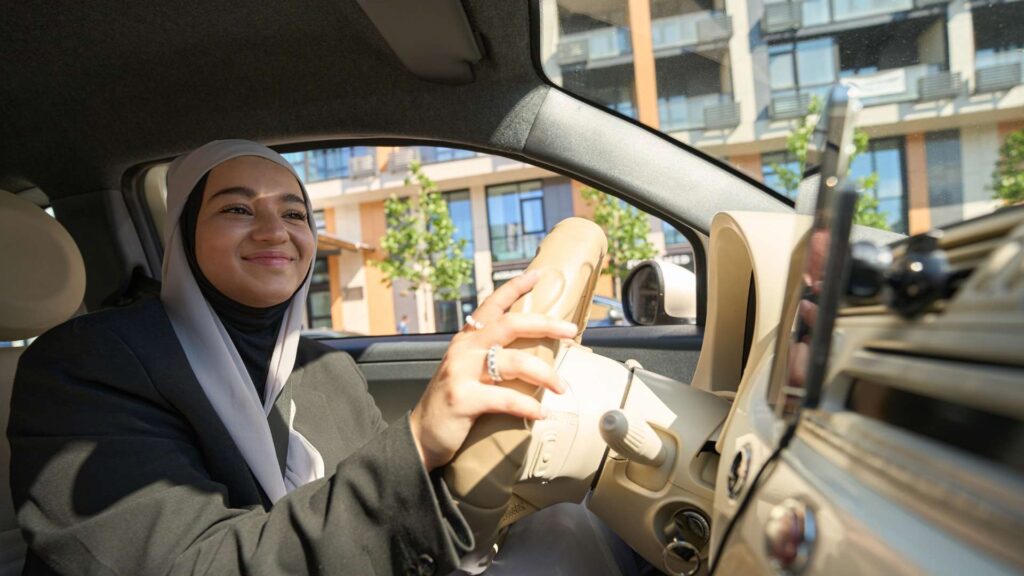Table of Contents
Car insurance is one of the biggest financial burdens for students and young drivers in America. According to industry reports, the average annual premium for an 18-year-old can exceed $5,000 — more than double what a 30-year-old with a clean record might pay. Parents already stretched thin by tuition, housing, textbooks, and everyday living expenses often struggle to cover these steep costs.
This is because insurers view young drivers as risky. Years of claims data show that teenagers and young adults are more likely to be involved in accidents, file claims, and exhibit unsafe driving behaviors. This blog will explore student discounts on car insurance: myths and facts. Learn how driving responsibly or academic achievements can lower premiums.
The Basics of Student Car Insurance Discounts
What Are Student Discounts?
Student discounts are price reductions applied to auto insurance premiums when young drivers meet certain conditions. These conditions are usually tied to academic performance, living situations, or group affiliations. Insurers use these factors as proxies for responsibility. For example, a student who maintains a GPA of 3.5 or higher is thought to demonstrate discipline and lower risk-taking tendencies, which can translate into safer driving.
Common Types of Discounts
- Good Student Discount
- Reward for maintaining strong grades.
- Typical requirement: GPA of 3.0 or higher, or being on the honor roll.
- Savings range: 10–20%.
- Distant Student Discount
- Applies when a student attends school more than 100 miles from home without access to the insured car.
- Savings range: 10–15%.
- Affinity or Alumni Discounts
- Offered to members of certain universities, fraternities, sororities, or alumni groups.
- Savings range: 5–10%.
- Safe Driver/Telematics Discounts
- Programs that monitor driving behavior via smartphone apps or plug-in devices.
- Factors tracked: speeding, braking, time of day, mileage.
- Savings potential: up to 30% when combined with student status.
Why Insurers Offer Them
Insurance companies don’t create discounts out of generosity. They rely on decades of claims data that show strong correlations between student responsibility and safer driving. Students who excel academically or limit their driving exposure file fewer and less costly claims. Offering discounts allows insurers to match premiums with actual risk better while attracting young customers who may become loyal long-term policyholders.
A Brief History of Student Discounts
Student discounts didn’t appear overnight. Their development is tied to the history of auto insurance and how companies sought to manage risk among young drivers.
- 1970s–1980s: Teen accident rates were climbing, and insurers began experimenting with “responsibility” discounts for high-achieving students. Early data showed that honor roll students had lower claim frequency.
- 1990s: The good student discount became a standard feature across many major insurers, cemented as a competitive differentiator.
- 2000s: Expansion into affinity discounts connected to universities, alumni networks, and student groups. These programs served both as insurance incentives and marketing opportunities.
- 2010s–2020s: Telematics programs emerged, allowing insurers to measure student driving behavior directly. Discounts were now tied not just to academic performance but also to real-world driving patterns.
- 2025: Student discounts are widespread but often misunderstood. Myths persist about their value and accessibility, creating confusion among families trying to cut costs.
Myths About Student Car Insurance Discounts
Myth 1 – Every Student Automatically Qualifies
Many assume that being a student is enough to get a discount. In reality, eligibility is strict. Good student discounts require proof of GPA, standardized test scores, or honor roll certificates. Distant student discounts apply only when a student lives away from home without a car. Online students living at home do not qualify.
Myth 2 – Discounts Are Always Huge
Parents often expect discounts to slash premiums dramatically. While 5–20% savings are possible, the reality is more modest. On a $2,500 annual premium, a 10% discount saves $250. Helpful, yes—but not life-changing.
Myth 3 – Good Grades Guarantee the Best Rate
Grades are only one factor. A straight-A student in a high-risk ZIP code, driving a sports car, may still pay more than a B-average student in a rural area with a safe car. Discounts don’t override base risk factors.
Myth 4 – Online Students Can Claim Distant Student Discounts
Distant student discounts are intended for students living away from home without car access. If you are an online student living at home and driving regularly, you do not qualify.
Myth 5 – Once You Qualify, You Keep It Forever
Discounts are not permanent. Insurers require proof every 6–12 months. If grades slip or living arrangements change, discounts can disappear.
Facts About Student Discounts
Good Student Discount
- Requirements: GPA 3.0+, standardized test scores, or honor roll.
- Proof needed: report cards, transcripts, or school letters.
- Savings: typically 10–20%.
Distant Student Discount
- Requirements: School 100+ miles from home, no access to an insured car.
- Savings: 10–15%.
- Rationale: Less driving equals lower risk.
Affiliation Discounts
- Tied to student groups, alumni associations, or professional organizations.
- Savings: 5–10%.
- Often overlooked but easy to claim if available.
Telematics Discounts
- Programs measure safe driving habits.
- Students benefit because they drive fewer miles and often during safe hours.
- Savings: up to 30%.

How Much Can Students Really Save?
National Averages
- Good student: $150–$500 annually.
- Distant student: $100–$400 annually.
- Affiliation: $50–$200 annually.
By Insurer
- State Farm: up to 25%.
- GEICO: 15% average.
- Progressive: 10–15%.
By State
Savings vary by regulation and accident risk. For example:
- California bans use of credit scores but allows good student discounts.
- Texas offers generous discounts but has higher baseline premiums.
- New York offers discounts, but urban risk keeps rates high.
Student Personas
Persona 1 – High School Junior With Honor Roll Grades
Annual premium: $3,500
Discount: 15%
Savings: $525
Persona 2 – College Freshman Living 200 Miles Away
Parents’ premium: $2,800
Distant student discount: 12%
Savings: $336
Persona 3 – Graduate Student in City With GPA 3.5
Premium: $2,200
Good student + telematics: 25% combined
Savings: $550
Persona 4 – Part-Time Student, Full-Time Delivery Driver
Premium: $4,500
No student discount, but telematics savings: 20%
Savings: $900
Maximizing Student Discounts and Overall Savings
- Maintain GPA above 3.0.
- Join telematics programs to earn extra discounts.
- Bundle policies with family home or renters insurance.
- Shop across insurers, as discounts vary.
- Use Beem, an AI-powered smart wallet app, to compare policies and highlight the best offers.
Mistakes Students and Parents Make
- Believing discounts eliminate high premiums.
- Forgetting to renew or reapply.
- Ignoring other savings opportunities.
- Not disclosing student status accurately.
Conclusion
Student car insurance discounts are real, but they’re often misunderstood. They can reduce costs, but won’t erase the high premiums young drivers face. Students and families can save hundreds annually by understanding myths vs. facts, maintaining good grades, combining discounts with telematics and bundling, and using tools like Beem.
Beem, the personal finance app trusted by over 5 million Americans, provides a convenient platform for comparing car insurance quotes and discovering affordable rates tailored to individual needs. Take the first step towards securing reliable coverage with Beem. Download the app here.
FAQs for Student Discounts on Car Insurance: Myths and Facts
How do I qualify for a good student discount?
Maintain a GPA of 3.0+, provide proof every 6–12 months.
How much can I save?
About 5%–20%, averaging $150–$500 annually.
Does it apply in grad school?
Most insurers limit discounts to under-25 undergraduates, but some extend to grad students.
What happens if my grades drop?
Discounts may be removed until GPA improves.
How does Beem help?
Beem compares policies, highlights where student discounts are most generous, and ensures you’re not overpaying.
















































